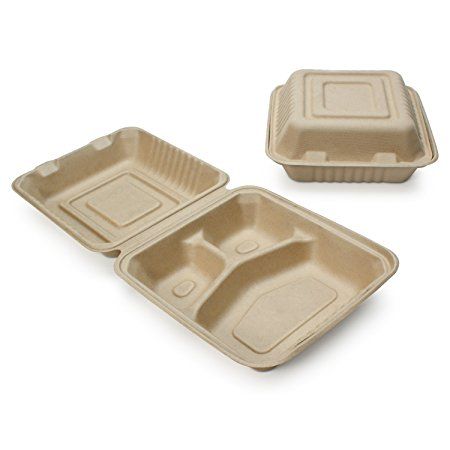In recent years, the global restaurant industry has increasingly embraced eco-conscious practices, driven by consumer demand for sustainable options. One significant stride in this movement is the adoption of compostable takeaway packaging. These materials offer several advantages over traditional packaging, making them a preferred choice for environmentally conscious restaurants. Firstly, compostable takeaway packaging is designed to break down into natural elements in a compost environment, leaving no toxic residues behind. This contrasts sharply with conventional plastic containers, which can persist in landfills or oceans for centuries, contributing to environmental degradation and harming wildlife. By using compostable materials, restaurants reduce their ecological footprint and contribute positively to waste management efforts. Moreover, compostable packaging supports the circular economy by closing the loop on resources. Made from renewable materials such as plant-based plastics, sugarcane fiber, or even algae, these containers can be returned to the earth as nutrient-rich compost. This compost can then be used to enrich soil and support agriculture, completing a sustainable cycle that conserves resources and reduces reliance on finite fossil fuels.
Restaurants that prioritize compostable packaging also benefit from enhanced brand reputation and customer loyalty. Consumers today are increasingly informed about environmental issues and prefer businesses that demonstrate a commitment to sustainability. By visibly choosing compostable packaging, restaurants align themselves with customer values, potentially attracting a growing segment of eco-conscious diners who prioritize sustainable practices when dining out. From a practical standpoint, compostable packaging is becoming more accessible and cost-effective as demand increases and technologies advance. While initial costs may be slightly higher than traditional alternatives, the long-term benefits often outweigh these considerations. Reduced disposal costs, potential marketing advantages, and alignment with regulatory trends towards reducing single-use plastics all contribute to the overall economic viability of compostable packaging solutions. Furthermore, regulatory pressures are pushing businesses towards more sustainable practices. Many regions are implementing bans or restrictions on single-use plastics, prompting restaurants to seek viable alternatives.
 The compostable takeaway packaging not only meets these regulatory requirements but also positions restaurants as proactive participants in environmental stewardship. In terms of operational benefits, compostable packaging can be as versatile and durable as traditional options, ensuring food quality and customer satisfaction are not compromised. Advances in material science have led to innovations that maintain temperature control, prevent leaks, and preserve food freshness, addressing concerns that were once barriers to adopting sustainable packaging solutions. Finally, the transition to compostable packaging supports broader sustainability goals within the foodservice industry. By reducing reliance on fossil fuels, minimizing waste sent to landfills, and promoting responsible consumption, restaurants play a crucial role in mitigating environmental impact across their supply chain. From environmental benefits such as reducing waste and conserving resources to economic advantages like enhanced brand reputation and regulatory compliance, the case for adopting compostable packaging is compelling. As consumer awareness and regulatory pressures continue to grow, embracing sustainable packaging solutions not only aligns with business interests but also contributes positively to the planet we all share.
The compostable takeaway packaging not only meets these regulatory requirements but also positions restaurants as proactive participants in environmental stewardship. In terms of operational benefits, compostable packaging can be as versatile and durable as traditional options, ensuring food quality and customer satisfaction are not compromised. Advances in material science have led to innovations that maintain temperature control, prevent leaks, and preserve food freshness, addressing concerns that were once barriers to adopting sustainable packaging solutions. Finally, the transition to compostable packaging supports broader sustainability goals within the foodservice industry. By reducing reliance on fossil fuels, minimizing waste sent to landfills, and promoting responsible consumption, restaurants play a crucial role in mitigating environmental impact across their supply chain. From environmental benefits such as reducing waste and conserving resources to economic advantages like enhanced brand reputation and regulatory compliance, the case for adopting compostable packaging is compelling. As consumer awareness and regulatory pressures continue to grow, embracing sustainable packaging solutions not only aligns with business interests but also contributes positively to the planet we all share.